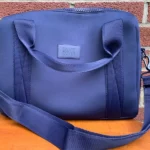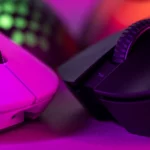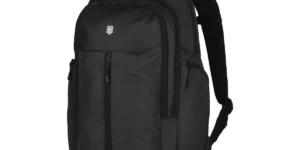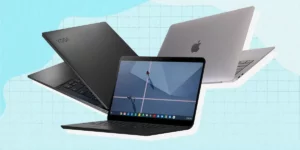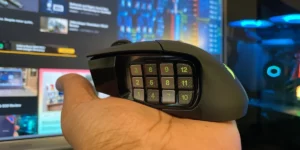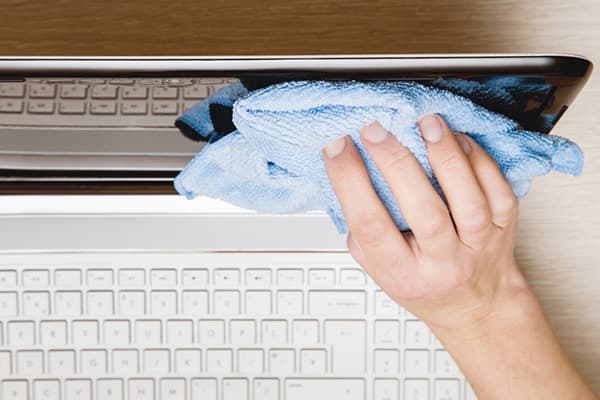
There is nothing worse than a laptop display that has smudges and fingerprints all over it. Although getting a 17 inch laptop with a big screen is a very good choice, and most of these laptops have beautifully detailed screens, these can get pretty dirty. Maybe you left your laptop open for a long period of time and it got dusty, maybe while opening it, you accidentally touched the screen and left some greasy fingerprints on it.
Ever had that moment when a relative, friend or someone wanted to show you something on your laptop, and while doing so, they touched the screen telling you where to click? Yeah, me too. That is the worst feeling that you can get. Or if you have a touchscreen laptop, that can get even worse.
No matter what happened to your laptop screen, this guide will help you clean your display without causing any damage or scratches.
The best thing about these newer displays is that they withstand more than the older TFT screens. You don’t have to worry about breaking it, just by applying a little pressure on the display. It is simply because most of the displays are designed to have a touch functionality.
If you have glasses, you probably encountered this. The easiest fix for this is getting a microfiber cloth , because it is designed for cleaning delicate surfaces. The good thing about this cloth is that you can use it for cleaning literally anything that needs special handling. Camera lens, glasses, phone screens can be cleaned of dust with that cloth. Because it’s soft, it won’t damage or leave scratches.
If you have been thinking about using a paper towel or a tissue for cleaning your laptop’s screen, just forget about it. These are pretty rough, and can easily damage the display and leave marks on it, not speaking about leaving behind their own litter.
First Step: Get a pack of microfiber cloth. If you have one for your glasses or phone, that can work too. Just make sure they are designed for laptop screens, glasses or cameras.
Second Step: Make sure your laptop is off. By having a black screen, you will see the dust you need to remove easier.
Third Step: Grab your cloth, and start cleaning the screen. Apply gentle pressure, and wipe in one direction. Make sure you don’t go in circles since that just moves the dust around.
Fourth Step: Continue until your screen is dust free.
What about cleaning dirty, grimy screens?

There will be cases when something dried on your screen, or is just simply more than dust. Unfortunately, using microfiber only is not going to do the job and it going to dirty it at the same time. You will need to use a damp sponge to get that dirt off.
You will need to get a completely new household sponge and deionized or distilled water. Make sure you don’t use tap water, because the minerals in it can actually damage your display. Just simply use water that has been filtered.
First Step: Unplug your laptop, remove the battery and make sure it is turned off. You don’t want to do this cleaning while the laptop is on.
Second Step: Wet the sponge with the ionized water we have mentioned, and twist it so it doesn’t drip.
Third Step: Wipe your monitor’s screen gently with the moist sponge and watch out for any drips. Make sure no fluid get’s on your keyboard or your speaker holes.
Fourth Step: Wait a few minutes, until your screen is dry. Don’t close the lid or use your machine until it is completely dry.
Oily or Sticky stuff? Ewww
To clean oily and sticky dirt, you will need more than water. You will need to make or buy cleaning solutions. It is pretty easy to buy screen-cleaning sprays from Amazon, and pretty often you can find nice deals for a whole kit what comes with a fibre cloth.
But if you want, you can make your own cleaning solution, by mixing equal parts of white vinegar and ionized water. Make sure you stay away from using any window cleaning sprays. Also, don’t spray any solution directly on the screen, or any part of your machine.
First Step: Make your laptop is shut down, unplugged from the power source and the battery is disconnected.
Second Step: Put some of the solution on your microfiber cloth, but make sure it’s only damp, and not wet.
Third Step: Gently rub in circles on the affected area on your screen, don’t apply too much pressure since that can damage your screen.
Fourth Step: Wait until the screen dries up, repeat the third step if your screen is still dirty. Make sure you don’t close the lid until it is completely dry.


